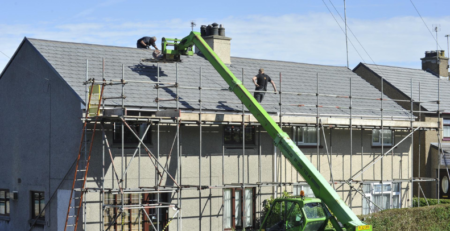10 Reasons Your Buy-To-Let Mortgage Application Was Declined
Facing a mortgage application rejection can be a heart-rending experience, especially when you’re looking to invest in the ever-dynamic UK buy-to-let market. Nonetheless, understanding the landscape of mortgage applications and the common reasons for rejections can significantly increase your chances of future success. This expanded guide dives deeper into ten potential reasons why your buy-to-let mortgage application might be declined in the UK.
-
Failing to Meet Income and Affordability Criteria
Lenders need assurance that you can afford the mortgage repayments, so they take a close look at your income and outgoings. They examine your salary or business income, rental income from other properties, investments, and other income streams. The lenders also consider your outgoings such as other mortgage payments, personal expenses, and any debts you might have. If your income isn’t high enough or if your financial commitments exceed what lenders deem manageable relative to your income, your application could face rejection.
Furthermore, most lenders have a minimum income requirement, usually around £25,000 per annum, but this may vary. If you’re unable to meet this, it could lead to your application being declined.
-
Being Classified as a Portfolio Landlord
The number of properties you own can impact your chances of securing a buy-to-let mortgage. If you own four or more mortgaged properties, you are considered a ‘portfolio landlord.’ Lenders are often more cautious when dealing with portfolio landlords due to the perceived increase in risk associated with managing multiple properties and mortgages. They might apply stricter lending criteria or avoid lending to portfolio landlords altogether. This can create a hurdle, particularly if you are expanding your property portfolio.
-
Age Restrictions
Mortgage lenders typically set age criteria for their applicants. Some lenders might not approve mortgages for individuals below a certain age, usually 18 or 21 years. Similarly, there might be an upper age limit as well, both for the time of application and the age you’ll be when the mortgage term ends. This is usually between 70 and 85 years. Age limits are implemented because lenders must ensure that the loan will be paid within an applicant’s working life. If you do not meet these age restrictions, it might lead to your application being rejected.
-
Volatile Markets
Uncertainty in economic conditions or volatility in the property market can make lenders hesitant. They might fear that your potential rental income could fluctuate or decline due to market instability, reducing your ability to meet your mortgage repayments. For instance, during the 2008 financial crisis and the COVID-19 pandemic, the property markets faced significant upheaval, leading lenders to adjust their policies and, in some cases, decline applications they would have otherwise accepted.
-
The Source of Your Income
Aside from the amount of income, the source and stability of your income are also crucial to lenders. If your income is irregular or unstable, it could flag a risk for lenders. This is often a problem for self-employed individuals, contractors, or those working in gig economy roles, who might not have a consistent income throughout the year. Lenders prefer a steady, reliable source of income that gives them confidence in your ability to meet your mortgage repayments consistently.

-
Poor Credit History
Your credit history plays a vital role in the approval of your mortgage application. Lenders view it as a reflection of your financial responsibility. If you have a poor credit score, have missed past payments, defaulted on loans, or faced County Court Judgements (CCJs) or bankruptcy, lenders may see you as a high-risk borrower. As a result, your chances of securing a mortgage might reduce significantly. It’s important to review your credit report regularly and take steps to improve your credit score, including making all debt repayments on time and maintaining a low credit utilisation ratio.
-
Number of Existing Mortgages
If you already have multiple mortgages, lenders might see you as over-stretched financially. Each mortgage represents a financial commitment, and the more mortgages you have, the greater the risk of default from the lender’s perspective. This can be particularly pertinent if your existing mortgages have high outstanding balances, as the debt-to-income ratio can paint a picture of financial strain.
-
Insufficient Deposit Size
A substantial deposit demonstrates to the lender your financial responsibility and capacity to save. Additionally, it reduces the loan-to-value (LTV) ratio, thereby decreasing the lender’s risk. However, if your deposit is small, it increases the LTV ratio, making the mortgage deal riskier for the lender. Usually, you’ll need at least a 25% deposit for buy-to-let mortgages, but the exact amount can vary among lenders. If you fail to provide a sufficient deposit, it might result in your application being turned down.
-
Incomplete or Erroneous Paperwork
Mortgage application involves a vast amount of paperwork, including proof of income, identification documents, and property details, among others. Any inaccurate information, missing documents, or even simple errors in your application form can cause delays or outright rejection. Therefore, it’s essential to meticulously complete all paperwork, double-check all entries, and ensure you provide all the necessary documents to boost the chances of your application being approved.
-
Property Usage
The intended use of the property is another factor that lenders consider. For instance, if the property is unusual, in a state of disrepair, or in a location with low rental demand, lenders might perceive it as risky, potentially leading to a rejection. Some lenders also have restrictions regarding property types, such as high-rise flats, ex-local authority properties, or HMOs (Houses in Multiple Occupation), and may decline applications for mortgages on these properties.
Conclusion
Mortgage application rejections can be disheartening, but it’s crucial to remember that each lender has its own set of lending criteria. An application rejected by one lender could be accepted by another. By understanding potential reasons for rejection, you can better position your application for future approval.
Seeking the guidance of a mortgage broker can be highly beneficial in navigating the complexities of the mortgage application process. They can provide personalised advice, assist with your paperwork, and connect you with lenders most likely to approve your application, based on their knowledge of different lenders’ criteria.
A mortgage application is a journey that leaves a financial footprint. Making sure it’s a positive one by addressing potential obstacles can take you one step closer to securing that sought-after buy-to-let mortgage approval in the UK. Your story, painted with financial prudence and perseverance, could have a rewarding end – it’s all about putting your best foot forward.
ARE YOU READY TO START INVESTING?
Subscribe to our mailing list now for exclusive deals, investment guides and the latest information from the property market.






